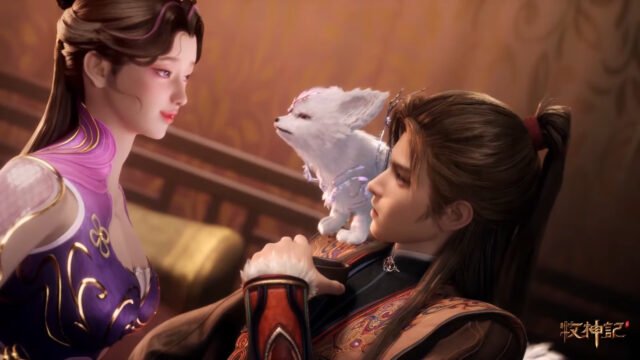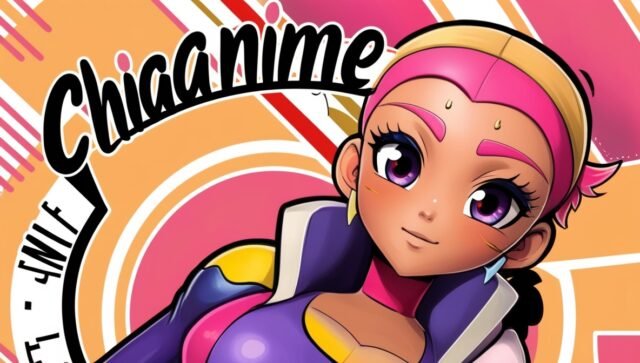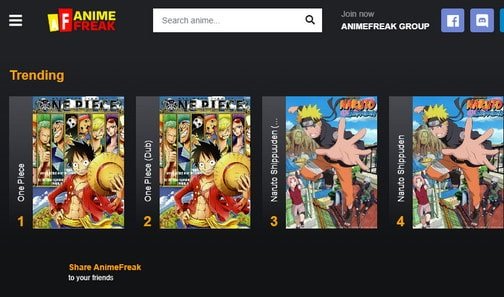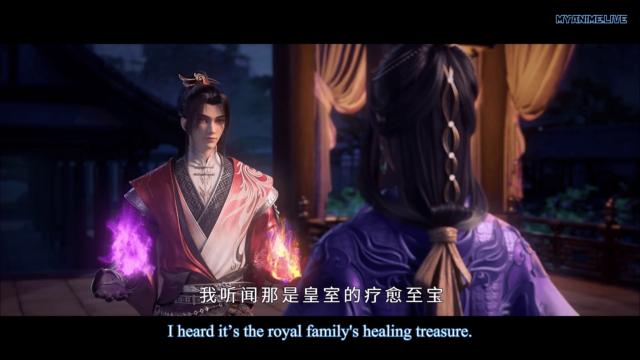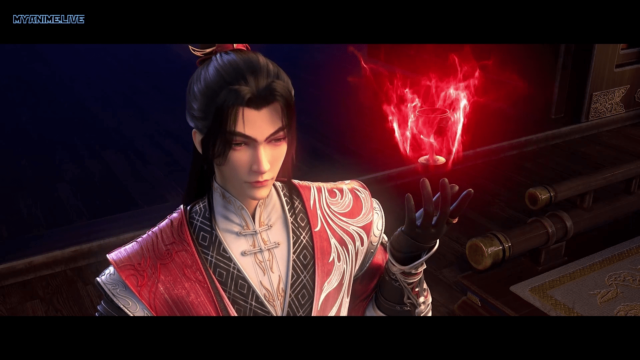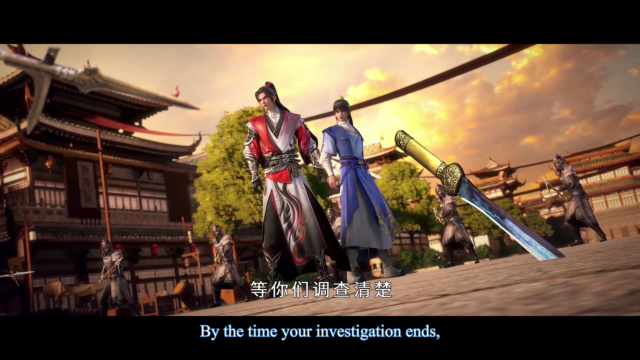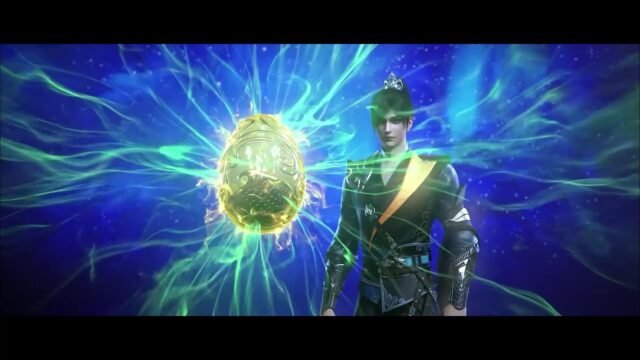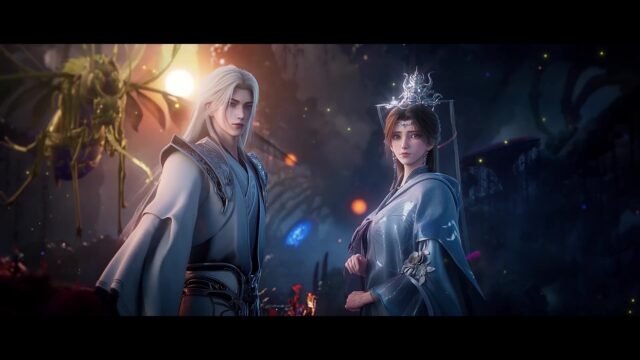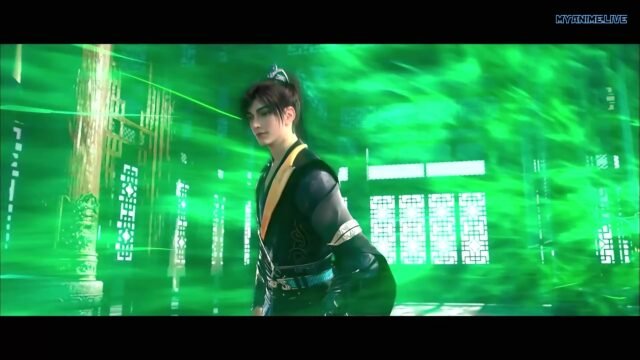The world of anime offers a rich tapestry of narratives and themes, with few series having delved as deeply into the human psyche as “Lain.” This series, known for its intricate storytelling and psychological complexity, challenges viewers to consider existential questions that resonate well beyond the screen. “Lain” serves as a catalyst for discussions around identity, technology, and society, making it a cornerstone of anime culture.
At its core, “Lain” is a coming-of-age story that skillfully intertwines themes of isolation and connectivity. The protagonist, Lain Iwakura, begins her journey as a shy and introverted girl. As she navigates both the real world and the virtual realm of the Wired, viewers witness her transformation. This transformation underscores the impact of technology on personal identity and relationships, a theme that continues to be relevant in today’s digital age.
One of the critical psychological aspects of “Lain” is its exploration of the self. The idea of self is often considered a construct—shaped by external forces and internal experiences. As Lain fluctuates between her physical and digital identities, she raises essential questions about the authenticity of the self when influenced by technology. It prompts you to consider: Are we defined by our physical presence or by how we present ourselves online?
In “Lain,” the Wired serves not only as a setting but also acts as a character in its own right. This virtual world represents a realm where individuals can escape their physical limitations and experiment with identity. However, as Lain delves deeper into the Wired, she discovers that this freedom comes with significant psychological costs. As her sense of reality blurs, you start to feel the tension between who she really is and who she presents herself as in the digital landscape. This unsettling duality is a reflection of the struggles many face today in an increasingly interconnected society.
The show presents several psychological archetypes through its supporting characters. These characters serve distinct roles, raising additional themes regarding mental health, trauma, and the perception of reality. Some of the notable characters include:
- Machiko Iwakura: Lain’s distant mother symbolizes emotional detachment, showcasing the impacts of lack of communication on mental well-being.
- Yomoda: A classmate who embodies curiosity and peer influence, driving Lain deeper into exploring her identity in both worlds.
- Ghost in the Machine: Represents the fragmented psyche of those lost in the complexities of technology.
Each character contributes to the eerie atmosphere of “Lain,” where isolation can lead to devastating consequences. The psychological nuance in these relationships highlights how individual connections impact mental health and well-being.
Moreover, the visuals and symbols present in “Lain” amplify its psychological depth. The use of color palettes, space, and editing choices creates an emotional and psychological impact on the viewer. In many scenes, a sense of claustrophobia is evident, suggesting the overwhelming nature of technology and its implications on the human experience. This cinematic approach further invites you to feel Lain’s disorientation, underscoring the toll that navigating these realms can take.
Ultimately, “Lain” serves as a cultural critique of modern society, examining how technology influences individuality and social dynamics. It forces viewers to confront uncomfortable realities about mental health, connection, and isolation. The psychological depth of “Lain” holds a mirror to contemporary issues where technology can facilitate connection but can equally amplify feelings of loneliness and despair.
In summary, “Lain” is more than just an anime; it’s a profound exploration of psychological themes relevant to every generation. By engaging with this series, you not only dive into a compelling story but also wrestle with significant questions about identity, reality, and the human experience in an age dominated by technology. For anyone interested in anime culture, understanding the psychological layers of “Lain” is an essential journey that continues to resonate in our digital lives.
Exploring Themes of Reality and Identity in “Serial Experiments Lain”
“Serial Experiments Lain” is a landmark anime that delves deep into the intricate themes of reality and identity. As viewers are taken on a journey through the life of Lain Iwakura, a shy and introverted girl, the series unravels the complexities of modern society’s connection to technology and the internet. It challenges you to think about who you are and how technology shapes our perceptions of reality.
The series is set in a world where the lines between reality and the digital realm begin to blur, sparking numerous questions about personal identity. The primary narrative follows Lain as she becomes increasingly engaged with a virtual world called the Wired. Her journey raises critical issues regarding existentialism and consciousness. Let’s explore these predominant themes more closely.
Reality vs. Virtual Reality
One of the central themes in “Serial Experiments Lain” is the juxtaposition of reality versus virtual reality. As Lain interacts more with the Wired, her understanding of what is real becomes muddled. This theme resonates with many viewers today, as we navigate through social media and virtual interactions. The shared experiences in the series reflect our struggles—often, we find ourselves questioning the authenticity of our relationships and experiences.
Identity Crisis
The theme of identity in “Serial Experiments Lain” is profound and multifaceted. Lain’s journey showcases how technology can fragment personal identity. As she explores the Wired, she encounters multiple versions of herself, leading to confusion about her true nature. This fragmentation mirrors modern concerns, particularly about how digital personas may differ significantly from our real selves. The question that arises is: who are you when faced with multiple identities online?
The Role of Isolation
Isolation plays a significant role in how Lain perceives both reality and identity. Initially, Lain is a loner who prefers minimal social interaction. However, as she dives deeper into the Wired, she finds a paradox where she interacts more with others but feels increasingly isolated from real-life connections. This reflects how technology can bridge distances while simultaneously deepening feelings of loneliness. It prompts you to consider how your online interactions compare with face-to-face relationships.
The Search for Self
Lain’s journey is fundamentally a quest for self-discovery. Throughout the series, she grapples with her place in a world that seems to consume her identity. The concept of the “self” becomes fluid, mirroring the digital nature of the Wired. It raises essential questions about the integrity of identity—can the self be reconstructed, and if so, at what cost? This invites you to reflect on your own identity in the digital age.
Technology as a Double-Edged Sword
“Serial Experiments Lain” intricately portrays technology as both a tool for enlightenment and a source of existential dread. While it offers connections that can lead to personal growth, it also presents dangers such as alienation and manipulation. The anime effectively illustrates how reliance on technology can lead to a loss of agency and identity, making you ponder where to draw the line in your digital interactions.
Symbolism and Visual Storytelling
The show’s unique animation style and creative visuals serve to enhance these themes. The use of symbolic imagery, color, and sound creates an immersive experience that amplifies Lain’s emotional journey. The scene transitions, often disorienting, help to convey her internal conflict—making the viewer feel the tension between reality and the Wired. This visual storytelling engages you on multiple levels, making the themes of reality and identity resonate even deeper.
In conclusion, “Serial Experiments Lain” profoundly explores the themes of reality and identity through its complex narrative and vivid imagery. The way the series tackles the isolating effects of technology, the quest for self, and the constant evolution of identity in a digital age continues to be relevant today. By immersing yourself in Lain’s world, you’re not just watching an anime; you’re invited to ponder the very nature of existence in an increasingly interconnected society.
The Influence of Cyberpunk Elements on “Lain Anime”
The world of anime is diverse and expansive, with many genres that touch on various themes and ideas. One of the most intriguing and often analyzed is the intersection of cyberpunk elements within “lain anime.” This type of anime delves into the interplay between technology and humanity, providing a rich canvas for both storytelling and philosophical exploration.
Cyberpunk anime often reflects a future where advanced technology coexists with a corrupted societal structure. In “lain anime,” the narrative delves deep into the digital world, presenting technology as both a tool for connection and a source of alienation. The anime’s protagonist, Lain, embodies these themes as she navigates through a maze of reality, identity, and the omnipresence of technology.
The Foundation of Cyberpunk in “Lain Anime”
To understand the impact of cyberpunk elements in “lain anime,” it’s essential to recognize its foundational themes:
- Technological Pervasiveness: The series portrays a world where technology infiltrates every aspect of life, showcasing the conflicting nature of connection and isolation.
- Identity Crisis: Characters often struggle with their identities, reflecting the cyberpunk trope of human augmentation and the blurred lines between real and virtual selves.
- Sociopolitical Commentary: “Lain anime” critiques societal structures and the influence of corporations and government on individual lives, mirroring real-world concerns.
Characterization Through Cyberpunk
In “lain anime,” characters are not just illustrations; they are meticulously crafted personas that explore profound questions about existence. Lain Iwakura, the main character, serves as a prime example:
- Lain Iwakura: A shy girl who gradually transforms as she becomes more involved in the digital realm of the “Wire.” Her evolution raises questions about self-identity, the essence of consciousness, and the effects of immersion in technology.
- Other Characters: Lain’s interactions with her friends, family, and other digital entities highlight the varying responses to technology, illustrating diverse perspectives on isolation, companionship, and control.
The Visual Aesthetic of Cyberpunk
The artistic design in “lain anime” captures the essence of cyberpunk effectively. The use of muted colors, urban landscapes, and ethereal digital interfaces establishes a unique atmosphere that resonates with the cyberpunk genre. Key visual elements include:
| Element | Description |
|---|---|
| Urban Environment | Dark, sprawling cities filled with neon lights and advanced technology. |
| Surreal Imagery | Dreamlike sequences that blur the lines between reality and virtual worlds. |
| Character Design | Unconventional styles that reflect individuality and the psychological state of characters. |
Thematic Resonance and Cultural Influence
The legacy of “lain anime” extends beyond its narrative and visuals. It serves as a cultural touchstone, reflecting anxieties and questions born from rapid technological advancements. Essential themes include:
- Isolation vs. Connection: As individuals become more connected through technology, the series highlights the paradox of increased isolation and disconnection from the physical world.
- Reality vs. Virtuality: “Lain anime” prompts viewers to question the nature of reality, particularly how digital experiences shape our perceptions and interactions.
- Control and Surveillance: The pervasive monitoring in society serves as a reminder of real-world concerns about privacy and autonomy in the digital age.
In conclusion, “lain anime” stands as a pivotal piece within the cyberpunk genre, illustrating the complexity of technology’s role in modern life. By exploring the intricate dynamics between human identity and digital existence, the series invites viewers to reflect on their own relationships with technology and society. Its lasting influence on both viewers and the anime industry continues to inspire conversations about the future of humanity in an increasingly digital world. So, as you dive deeper into the layers of “lain anime,” consider how it mirrors our reality and where we might be headed in our own cyberpunk narratives.
Analyzing Character Development in “Serial Experiments Lain”
“Serial Experiments Lain,” an iconic psychological thriller and cyberpunk anime, takes viewers on a mind-bending journey that explores the boundaries of reality, identity, and technology. Central to this narrative is Lain Iwakura, a young girl who undergoes profound character development throughout the series. Understanding her transformation is key to grasping the anime’s deeper themes and messages.
Lain starts the series as an introverted and socially awkward teenager who struggles to connect with her peers. She is depicted as a typical high school student, grappling with life’s pressures and uncertainties. However, her character begins to show signs of change when she receives an email from a classmate who recently died. This event serves as a catalyst, pushing Lain deeper into the digital realm of the “Wired,” a virtual space that transcends traditional limitations.
As Lain navigates the complexities of the Wired, her character evolves, shifting from a passive observer to an active participant in the virtual world. The more Lain engages with the Wired, the more she unravels the intricate layers of her identity. Here’s how her character develops through key stages:
- Initial Innocence: Lain’s early personality is marked by innocence and a lack of self-awareness. She is disengaged from her surroundings, even oblivious to technology’s potential.
- Curiosity and Exploration: The shocking email sparks her interest in the Wired, leading her to explore and experiment with what this digital world can offer.
- Confrontation with Self: As Lain interacts more with the Wired, she grapples with existential questions regarding her own existence, leading to significant internal conflict.
- Transformation and Empowerment: Ultimately, Lain emerges as a powerful entity within the Wired. She becomes aware of her abilities and her dual existence—both in the real world and the digital one.
Throughout the series, audiences witness the stark contrast between Lain’s initial character traits and her developed persona. This transformation is not merely physical but also psychological. It raises fundamental questions about the nature of reality, identity, and the impact of technology on human connections.
One of the anime’s most striking aspects is how Lain’s connection to technology reflects broader societal issues. As she digs deeper into the Wired, the series illustrates how immersion in technology can blur the lines of reality and self-identity. Lain’s journey becomes a metaphor for the modern human experience, depicting how we might lose sense of who we are in a digital age.
Another element of character development to consider is Lain’s relationships. Initially, she is disconnected from her family and peers, showcasing loneliness. However, as she interacts with various characters in the Wired, significant relationships form, albeit often loaded with ambiguity. Here are some key relationships that influence her development:
| Character | Impact on Lain |
|---|---|
| Yomoda | Encourages Lain to explore the Wired, pushing her towards her transformation. |
| Miho | Embodies Lain’s desire for normalcy and connection in her otherwise isolated life. |
| Her family | Represents the disconnect Lain feels from reality, highlighting her struggles with her identity. |
By delving into her interactions, viewers witness Lain’s shift from isolation to profound engagement with others, albeit in a non-traditional sense. This evolution reflects a growing complexity in her character, emphasizing the dualities present in human relationships—both virtual and real.
The final stages of Lain’s development are particularly compelling. By the end of “Serial Experiments Lain,” her character transcends her initial limitations, becoming a god-like figure within the Wired. This shift not only showcases her growth but also serves as a cautionary tale about the implications of technology. Lain’s journey exemplifies the struggle between individuality and the collective experience shaped by technological advancements.
In essence, the character development of Lain Iwakura is a profound exploration of self and identity. “Serial Experiments Lain” challenges viewers to reflect on their relationship with technology and the essence of their own existence. It invites you to question: how much of what we perceive as real is shaped by our virtual interactions, and at what point do we lose the essence of our true selves?
The Legacy of “Lain” and Its Impact on Modern Anime Storytelling
The 1998 anime “Serial Experiments Lain,” created by Yasuyuki Ueda and directed by Ryūtarō Nakamura, has left a profound mark on the landscape of modern anime storytelling. This series, celebrated for its deep philosophical themes and experimental narrative structure, has paved the way for a new wave of creators. Its legacy is still felt today, influencing narratives that delve into the complexities of technology, identity, and reality.
One of the most striking aspects of “Lain” is its exploration of technology’s impact on human connection. The central character, Lain Iwakura, transitions from a shy girl into a digital entity known as “Lain,” traversing the boundary between her physical existence and the virtual world of “The Wired.” This duality brings forth questions about authenticity and self-identity—a theme that resonates in numerous contemporary anime. Shows like “Steins;Gate” and “Re:Zero – Starting Life in Another World” borrow elements from “Lain,” showcasing characters who struggle with their identities amidst technological chaos.
The Characters and Their Development
The character arcs in “Lain” also set a standard for emotional storytelling in anime. Lain’s evolution from a passive observer to an active participant in her narrative mirrors what modern audiences expect in character development. Unlike traditional storytelling, where characters might follow a predictable arc, Lain’s journey reflects a more nuanced approach. Here are key character characteristics that contribute to this innovative storytelling:
- Complex Protagonist: Lain is relatable and flawed, drawing viewers into her struggles.
- Supportive Characters: The supporting cast adds depth and emotional resonance, providing diverse perspectives on the themes explored.
- Dynamic Growth: Characters evolve throughout the series, highlighting the impact of their decisions in a tech-driven world.
Philosophical Underpinnings
The philosophical themes in “Lain” challenge viewers to think critically. The series tackles notions of reality, consciousness, and the nature of existence. The exploration of the “self” in a digital age is exceptionally timely, mirroring current discussions surrounding social media and identity. These themes are not merely academic; they engage the viewer emotionally and intellectually, encouraging personal reflection. Series like “Ghost in the Shell” and “Paprika” echo this thematic richness, as they too challenge the fabric of reality and humanity’s place within it.
Visual and Auditory Influence
The visual style of “Lain” has also influenced modern anime aesthetics. The use of stylized animation, muted color palettes, and surreal imagery creates a unique atmosphere that remains impactful. This has inspired upcoming animators to integrate unconventional artistic choices in their own works. The minimalistic score, composed by Yoshitoshi ABe, enhances the mood, emphasizing the show’s themes of alienation and connection.
The Impact on Modern Creation
Many current anime creators acknowledge the influence of “Lain” on their works. Here are some notable examples:
- “Steins;Gate”: Integrates time travel and technology in a way that reflects Lain’s explorations of consciousness.
- “Psycho-Pass”: Delves into societal control via technology, reminiscent of Lain’s concerns regarding freedom and individuality.
- “Your Name”: Explores connections and technology through a more romantic lens, inspired by Lain’s handling of relationships in a digital age.
Viewer Engagement and Community Impact
“Lain” has inspired not only creators but also a devoted fan community. Its complex narrative has sparked hours of analysis and discussion among viewers. Online platforms and forums contribute to a rich culture of fan theories and interpretations, elevating the viewing experience. This community-driven engagement continues to foster a deeper understanding of the themes presented within the series.
As technology continues to evolve, the relevance of “Lain” is more pronounced than ever. Its ability to provoke thought on the nature of reality and identity speaks to our current societal challenges. In an age where digital lives intertwine with physical existence, the legacy of “Serial Experiments Lain” serves as a poignant reminder of how stories can shape our understanding of ourselves and the world.
Key Takeaway:
“Serial Experiments Lain” is a cornerstone of anime that delves deep into themes of identity, reality, and technological influence. The series is known for its complex psychological narratives, inviting viewers to explore their own understanding of self in the digital age. This anime is not just entertainment; it holds a mirror to our society’s relationship with technology, questioning what it means to exist in a world increasingly dominated by digital connections.
One key takeaway is the profound exploration of psychological depth within the character of Lain herself. As she navigates her way through layers of virtual identity and reality, viewers are compelled to confront their fears and uncertainties about their own identities in an increasingly virtual world. This exploration of self reflects broader societal challenges, particularly in how we present ourselves online versus who we are in reality. It encourages audiences to critically analyze the boundaries between the two, which is ever more relevant today.
The series is also steeped in cyberpunk elements, creating a gritty, futuristic backdrop that enhances the overarching themes of disconnection and existential crisis. The dystopian setting serves as a catalyst for the characters’ development, pushing them to grapple with the implications of technology on their lives. This style resonates with fans of the genre and has significantly influenced modern anime, inspiring numerous creators to weave similar themes into their work.
Character development is tightly interwoven with the narrative, leading to a transformative journey for Lain. As viewers witness her evolution, the story challenges the audience to think critically about personal growth in the context of societal pressures and technological saturation. This meticulous character development not only elevates Lain’s story but sets a benchmark for how narratives in anime can engage deeply with philosophical questions.
Lastly, “Serial Experiments Lain” has left an indelible mark on anime storytelling, setting a precedent for future series to explore complex narrative structures and emotional depth. Its legacy continues to inspire creators, urging them to fuse art with thought-provoking themes that resonate with audiences worldwide. In summary, “Lain” is a powerful exploration of the intersection between technology, identity, and society, making it a timeless piece of art in the anime canon.
Conclusion
The world of “Lain” has left a significant mark on anime culture, resonating deeply with viewers through its intricate exploration of psychological themes. By delving into the nature of reality and identity within “Serial Experiments Lain,” the series challenges perceptions of self in an increasingly digital age. It invites you to reflect on how technology intertwines with personal existence, raising questions that remain relevant today.
The cyberpunk elements integral to “Lain” not only enhance its visual storytelling but also enrich its narrative, creating a chilling atmosphere that magnifies the protagonist’s struggles. The fusion of high-tech and human emotion draws you in, urging you to ponder the price of connectivity in the modern world. As you watch Lain’s character evolve, you witness a compelling journey of personal transformation, which serves as a mirror for many who wrestle with their own identities and the impacts of society’s rapid technological changes.
The legacy of “Lain” is profound and enduring, influencing countless anime creators who strive to push the boundaries of storytelling. Its bold approach to complex themes has paved the way for modern narratives that continue to explore the intricacies of human experience in a digital landscape. As you engage with “Lain,” you are invited not only to enjoy a unique anime experience but to challenge your understanding of reality, identity, and the interwoven nature of humanity and technology. This series inspires discussions that linger long after the screen goes dark, making it a timeless fixture in the realm of anime storytelling.


